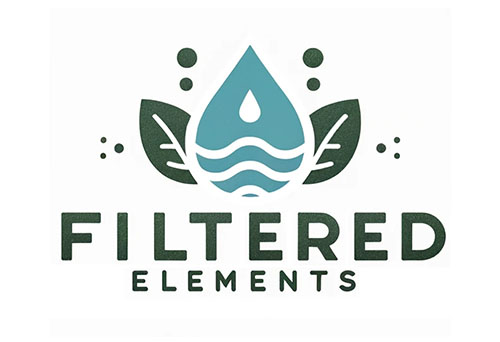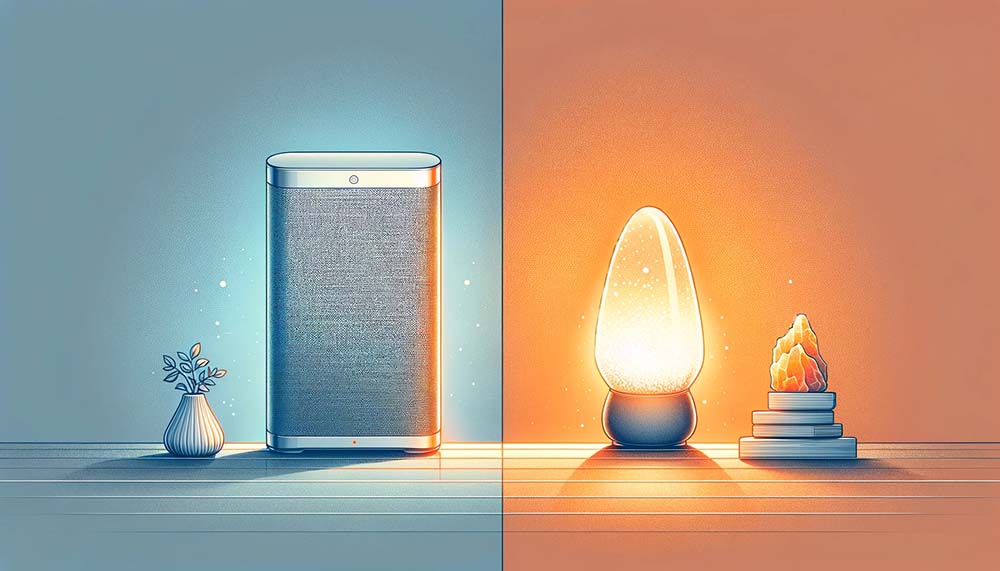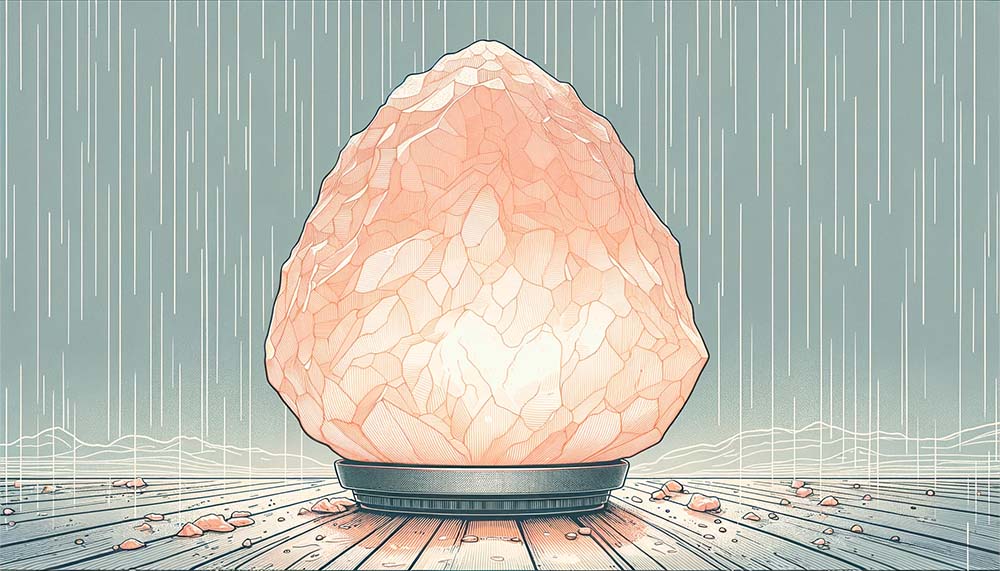In the quest for cleaner indoor air, many people are turning to natural solutions like Himalayan salt lamps. These unique lamps have gained popularity in recent years, thanks in part to bold claims about their air purification abilities. Proponents say that salt lamps can clean the air, boost mood, and provide health benefits – all while bathing your space in a soothing pink glow.
But how do these trending lamps actually compare to traditional air purifiers when it comes to measurably improving indoor air quality? Can salt lamps truly filter out pollutants as effectively as devices specifically designed and tested for that purpose?
In this article, we’ll take a closer look at the science behind how salt lamps are supposed to purify the air and explore the existing research on their effectiveness. We’ll also examine how true HEPA air purifiers work to clean indoor air and highlight the key differences between these two approaches.
Finally, we’ll weigh the pros and cons of each to help you determine the best solution for your needs – whether you’re looking to seriously tackle indoor pollutants, or simply want to add a tranquil touch to your space.
How Salt Lamps Claim to Purify Air
Himalayan salt lamps have gained popularity in recent years not just for their unique beauty, but also for their supposed air purification abilities. Proponents of salt lamps claim they can clean the air in your home through several interesting mechanisms:
- Hygroscopic properties of salt: Salt is naturally hygroscopic, meaning it readily attracts water molecules from the surrounding air. As the salt lamp warms up from the heat of the light bulb inside, it draws in water vapor along with air pollutants like dust, pollen, smoke particles, and bacteria that may be hitching a ride on those water molecules.
- Air filtering surface: Those airborne contaminants and water vapor collect on the surface of the salt lamp. Occasionally wiping down your salt lamp can remove this buildup of pollutants that have accumulated on the salty surface.
- Generation of negative ions: When the lamp heats up and the water evaporates back into the air, the theory is that beneficial negative ions are generated in the process. Some believe these negative ions can boost mood and have other health benefits by counteracting positive ions from electronic devices.
While these air cleaning abilities of salt lamps sound impressive, it’s important to note that many of the health claims are anecdotal and need more scientific research to be proven definitively. But the relaxing glow sure doesn’t hurt!
Scientific Evidence on Salt Lamps’ Air Purifying Abilities
While the theory behind how salt lamps work to purify indoor air is intriguing, it’s important to examine the available scientific evidence to determine their actual effectiveness. Currently, there is limited peer-reviewed research specifically focused on the air purification capabilities of Himalayan salt lamps.
A few small studies have suggested that salt lamps may have a minor impact on indoor air quality, but these studies have limitations and their findings are not conclusive:
- One study conducted by the Bavarian State Office for Health and Food Safety in Germany found that salt lamps could slightly reduce the concentration of airborne particles in a controlled environment. However, the study also noted the effect was minimal and that salt lamps should not be considered a replacement for proper ventilation and air filtration methods.
- Another small study published in the Pakistan Journal of Biochemistry and Molecular Biology in 2010 reported a slight reduction in microbes in the air after placing a salt lamp in a room. But again, the study size was very limited.
When it comes to the claimed benefits of negative ions released by salt lamps, some studies have indeed linked high concentrations of negative ions to improved mood and reduced depression symptoms. However, it’s important to note that the concentration of negative ions supposedly produced by salt lamps is likely much lower than the levels found in natural environments like waterfalls or beaches that show these effects.
While anecdotal evidence from salt lamp users often report positive effects on breathing, allergies, sleep and mood, more rigorous scientific research is still needed to quantify and validate these benefits with certainty. Based on the current evidence, the measurable air purifying effects and benefits of salt lamps seem to be modest at best.
How Traditional Air Purifiers Work
In contrast to salt lamps, traditional air purifiers are designed and tested specifically to filter indoor air and remove pollutants. Here’s how most standard home air purifiers function:
- HEPA filtration: The key component in air purifiers is a High Efficiency Particulate Air (HEPA) filter. By definition, certified HEPA filters must capture at least 99.97% of airborne particles 0.3 microns in size. This allows them to effectively filter out dust, pollen, pet dander, smoke particles, and other common indoor pollutants.
- Activated carbon filters: Many air purifiers also include an activated carbon pre-filter to capture odors, gases, and volatile organic compounds (VOCs) that a HEPA filter would miss. The highly absorbent carbon traps these molecules as air passes through.
- Air circulation: One or more internal fans draw in air from the room, pass it through the filter(s), and expel the purified air back out. This process repeats continously, cycling and filtering the air in the space several times per hour.
- Clean air delivery rate (CADR): Air purifiers are rated by the volume of filtered air they deliver, allowing comparison and proper sizing for different room sizes. The higher the CADR, the more quickly and effectively the air is cleaned.
So in summary, true HEPA air purifiers are specifically engineered and tested to capture airborne particulates and significantly improve indoor air quality. Through continuous mechanical filtration and air cycling, they provide a proven, measurable way to reduce indoor pollutants – making them a more reliably effective option than salt lamps for air cleaning.
While salt lamps may offer a soothing glow and decorative appeal, when it comes to strongly evidence-backed air purification, traditional HEPA filtration remains the gold standard for healthier indoor air.
Advantages of Air Purifiers Over Salt Lamps
When it comes to measurably improving indoor air quality, traditional air purifiers have several key advantages over Himalayan salt lamps:
- Higher proven efficacy: Air purifiers with true HEPA filters are rigorously tested and certified to capture at least 99.97% of airborne particles as small as 0.3 microns. This includes common pollutants like dust, pollen, pet dander, and smoke. In contrast, the air purifying effects of salt lamps have not been conclusively quantified by scientific studies.
- Ability to filter larger air volumes: Air purifiers are designed to cycle and filter the air in a room multiple times per hour, with Clean Air Delivery Rates (CADR) that indicate how many cubic feet of air they can clean per minute. Even a small bedroom air purifier can usually filter more air than a salt lamp could feasibly purify.
- Established standards and ratings: Air purifiers are rated by CADR and have clear guidelines for appropriately sizing them based on room dimensions. Certified true HEPA filters have to meet specific performance criteria. For salt lamps, there are no equivalent standards to verify or compare air purifying capabilities across different lamps.
- Broader protection against pollutants: While salt lamps may trap some particles on their surface, air purifiers can capture a wider range of contaminants. Many include activated carbon filters for odors and VOCs in addition to HEPA filters for particles. Some purifiers even offer additional specialized filtration for specific concerns like smoke or germs.
Reasons to Still Consider Salt Lamps
Despite their shortcomings as air purifiers, there are still several compelling reasons why many people enjoy having Himalayan salt lamps in their homes.
Salt lamps have an undeniable visual appeal, with their pink and orange hues, organic shapes, and warm glow. They can be a beautiful addition to a room and a great conversation piece. For those drawn to earthy, natural décor elements, salt lamps are one-of-a-kind. It’s important to make sure you are purchasing an authentic Himalayan salt lamp, as there are many imitations on the market – be sure to check out our list of the best genuine Himalayan salt lamps to ensure you get the real deal.
The soft, amber light from a salt lamp can create a cozy, calming atmosphere that may help with relaxation and stress relief. Some people find the gentle glow soothing for winding down in the evening or creating a peaceful mood in a bedroom or meditation space.
While the research is limited, there is anecdotal evidence and some small studies suggesting salt lamps may have a minor impact on air quality by attracting and trapping certain pollutants by producing negative ions. They’re not a substitute for an air purifier, but could potentially provide a small complementary boost.
Compared to air purifiers which can cost hundreds of dollars and require regular filter replacements, salt lamps tend to be less expensive and lower maintenance. They’re an accessible entry point into natural air quality solutions for those on a budget.
Air Purifiers and Salt Lamps Compared
This comparison table provides an at-a-glance look at how salt lamps and air purifiers stack up in terms of air cleaning effectiveness, capacity, health benefits, aesthetics, maintenance, and cost.
| Feature | Salt Lamps | Air Purifiers |
|---|---|---|
| Air purification effectiveness | Limited and unproven ability to remove airborne particles and pollutants | High proven effectiveness in filtering out 99.97% of airborne particles as small as 0.3 microns using HEPA filters |
| Air cleaning capacity | Minimal – can only clean air in the immediate vicinity of the lamp | High – can filter and circulate large volumes of air in a room multiple times per hour |
| Health benefits | Anecdotal claims of improved mood, sleep, and breathing but lacking strong scientific evidence | Proven ability to significantly reduce allergens, asthma triggers, and other airborne irritants for improved respiratory health |
| Negative ion generation | Claimed benefit but actual negative ion output is likely too low to produce measurable health effects | Not a primary function, though some purifiers may include ionizers |
| Aesthetics | Attractive natural decor element with soothing ambient light | Utilitarian appearance focused on functionality over form |
| Maintenance | Requires regular wiping to remove trapped particles and occasional deep cleaning | Requires periodic filter replacements, with costs varying by model |
| Cost | Generally inexpensive at $20-50 per lamp | Higher upfront cost ranging from $50-1000+ depending on size and features |
Final Thoughts
When it comes to clearing the air, Himalayan salt lamps and traditional air purifiers both aim to provide a breath of fresh air – but they go about it in very different ways. Salt lamps rely on the hygroscopic and ionizing properties of salt to attract pollutants and release negative ions, while air purifiers use mechanical filtration to physically remove airborne particles.
The research on salt lamps’ measurable impact on air quality is still quite limited, while the efficacy of true HEPA air purifiers is much more robustly established through standardized testing. Air purifiers also filter significantly more air than a salt lamp can feasibly clean.
Ultimately, if your top priority is proven, effective air purification, a standard HEPA purifier is your best bet. But if you’re drawn to the natural beauty and soothing ambiance of salt lamps, there’s nothing wrong with enjoying them for their aesthetic appeal and anecdotal benefits.
Whether you choose a salt lamp, an air purifier, or a combination of the two, taking steps to improve your indoor air quality is always a good idea. Every breath matters, so why not make them as fresh and clean as possible?




